 Mojaloop Reference Architecture Docs 1.0
Mojaloop Reference Architecture Docs 1.0 # Transfers BC
The Transfers BC is responsible for orchestrating transfer requests. It works in concert with a number of other BCs, notably Settlements, Scheduling, Participant Lifecycle Management, Accounts & Balances, and the FSPIOP.
# Terms
The following terms are used in this BC, also known as a domain.
| Term | Description |
|---|---|
| Accounts | Refers to accounts used in all transfer activities. They are used to record credit and debit positions, either temporarily in the case of accounts allocated for transfer purposes, or permanently in the case of final transfer updates to participant accounts. |
| Participant | Typically refers to DFSP Payer/Payee parties using Mojaloop. |
| IGS | Transfer settle method - Immediate Gross Settlement. This process is typically used in high volume environments such as retail, and is used by individual and shared accounts. In shared account environments, the system is capable of updating Participants balances by updating the proportional value of each Participants holds of the total funds available in the account |
| DNS | Transfer settlement method - Deferred Net Settlement. This process is frequently used in enviroments where a party of Participants engage in a single Transfer requiring settlement to all Participants. A typical example might include a scenario where raw materials are sold Participant A to Participant B to manufacture into a finished product, which is then sold back to Participant A. The switch calculates the proportional value that each Participant to the transaction is due, and settles this amount when the Settlement Window closes. |
# Functional Overview - Transfers - Bulk
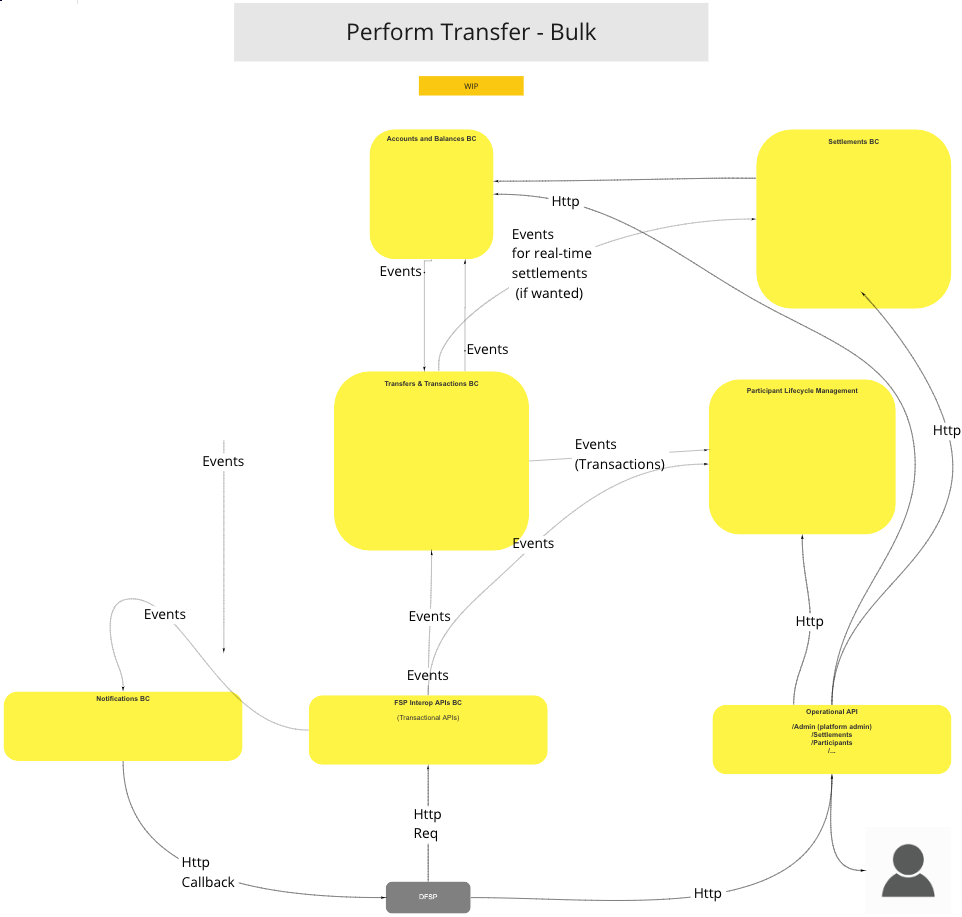
# Use Cases
# Perform Transfer (universal mode)
# Description
Transfer method without Actor intervention.
# Flow Diagram

# Perform Transfer with Payee Confirmation
# Description
Transfer method with Actor intervention.
# Flow Diagram
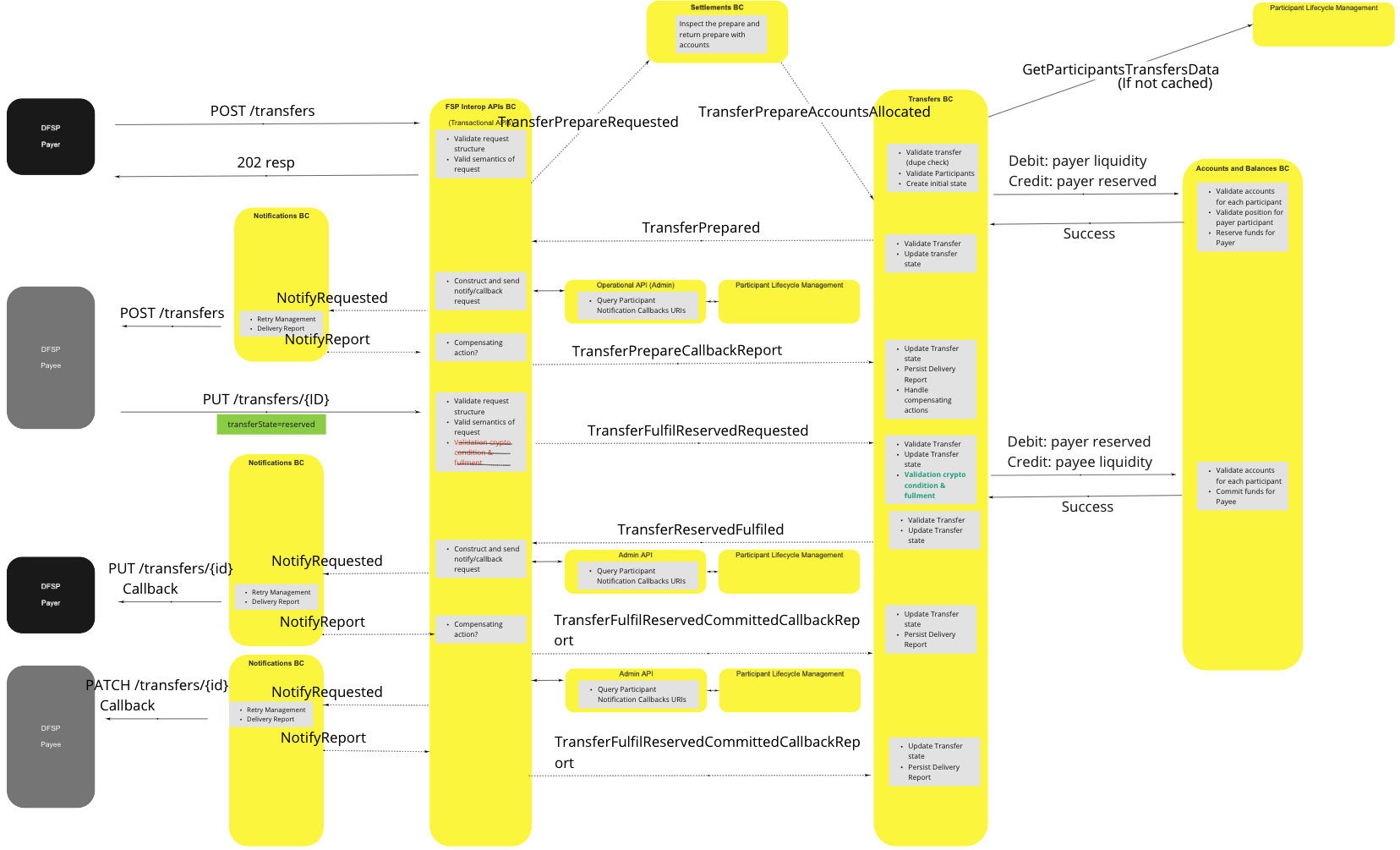
# Query (GET) Transfer
# Description
Transfer status report query.
# Flow Diagram

# Perform Transfer - Duplicate POST (Resend)
# Description
Duplicate Transfer request method - completes
# Flow Diagram

# Perform Transfer - Duplicate POST (Ignore)
# Description
Duplicate Transfer request method - ignored
# Flow Diagram

# Non-Happy Path Use Case Variations
# Perform Transfer - PayeeFSP Rejects Transfer
# Description
Transfer request rejected by Payee
# Flow Diagram
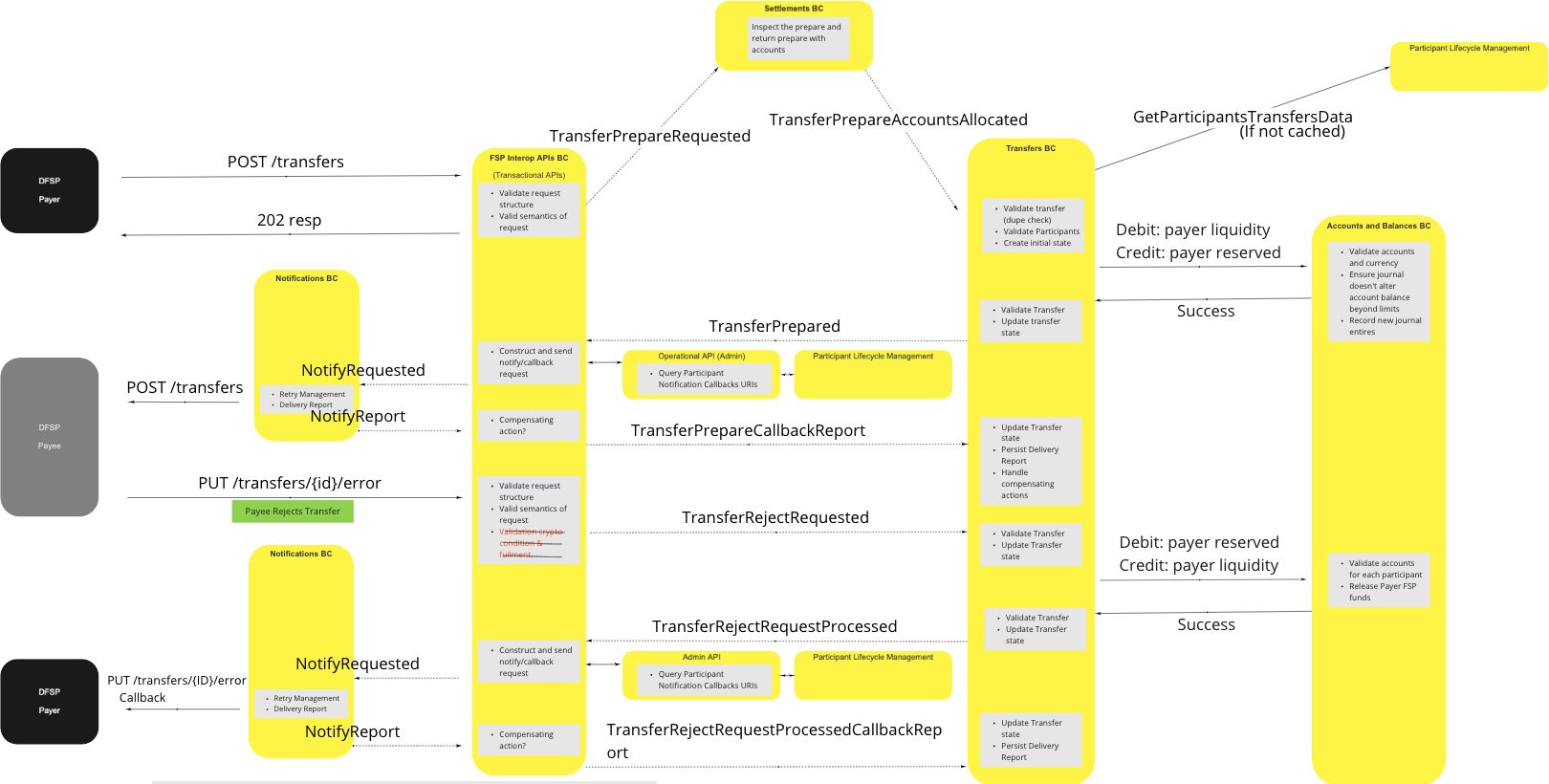
# Perform Transfer - Timeout (Prepare)
# Description
Transfer prepare request timeout
# Flow Diagram
_20210716.28bc46c3.png)
# Perform Transfer - Timeout (Pre-Committed)
# Description
Pre-committed Transfer request timeout
# Flow Diagram
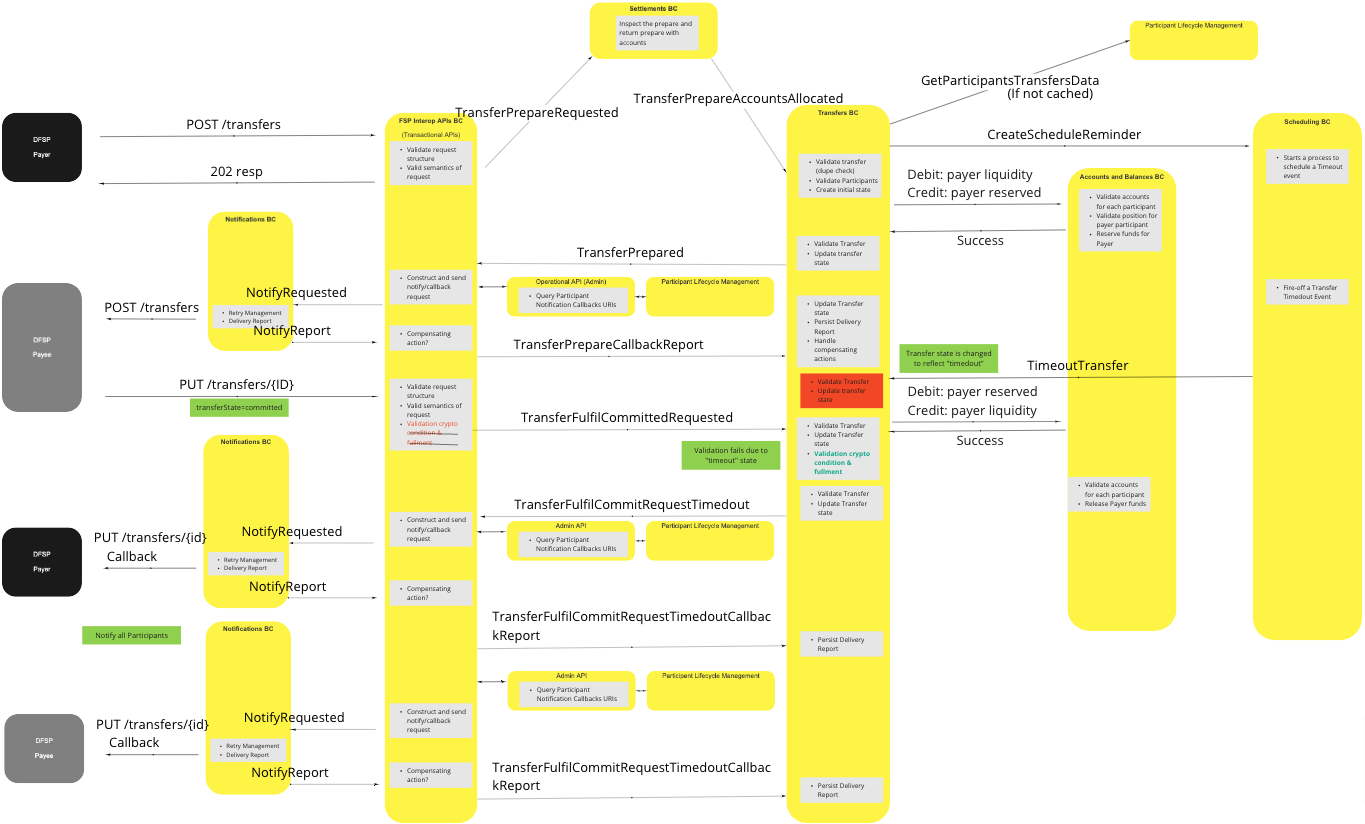
# Perform Transfer - Timeout (Post-Committed)
# Description
Post-committed transfer request timeout
# Flow Diagram
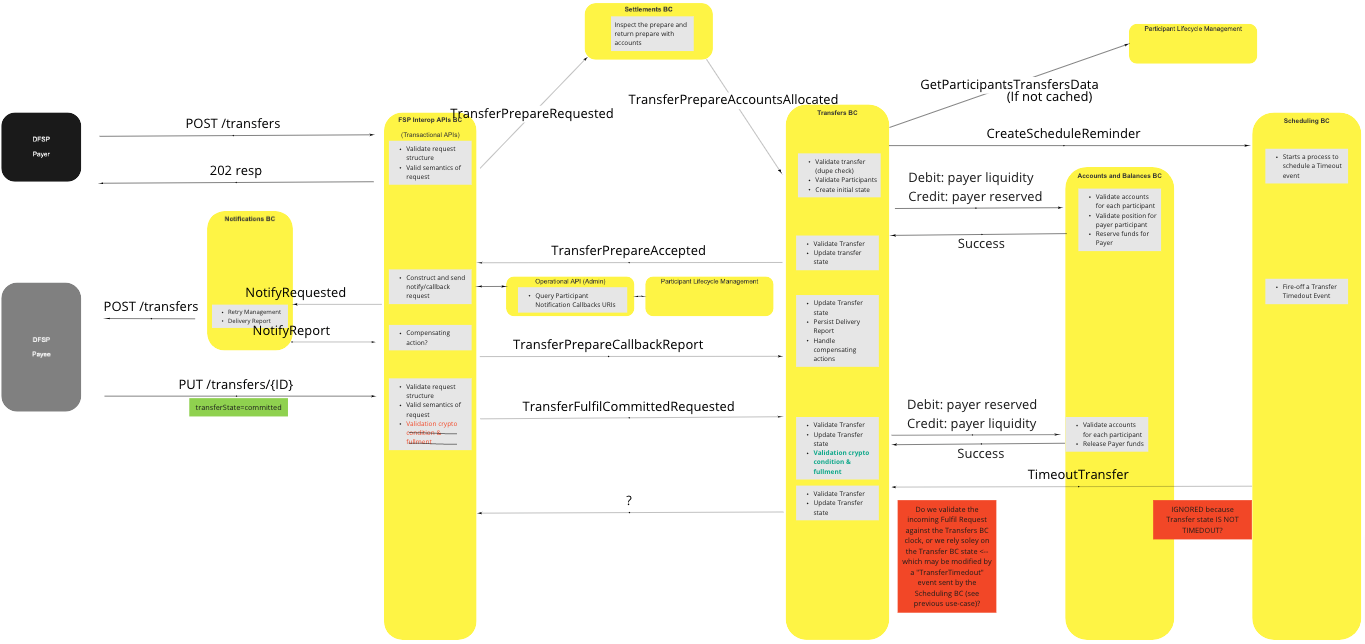
# Perform Transfer - Duplicate POST (None Matching)
# Description
Non-matching duplicate Transfer request timeout
# Flow Diagram
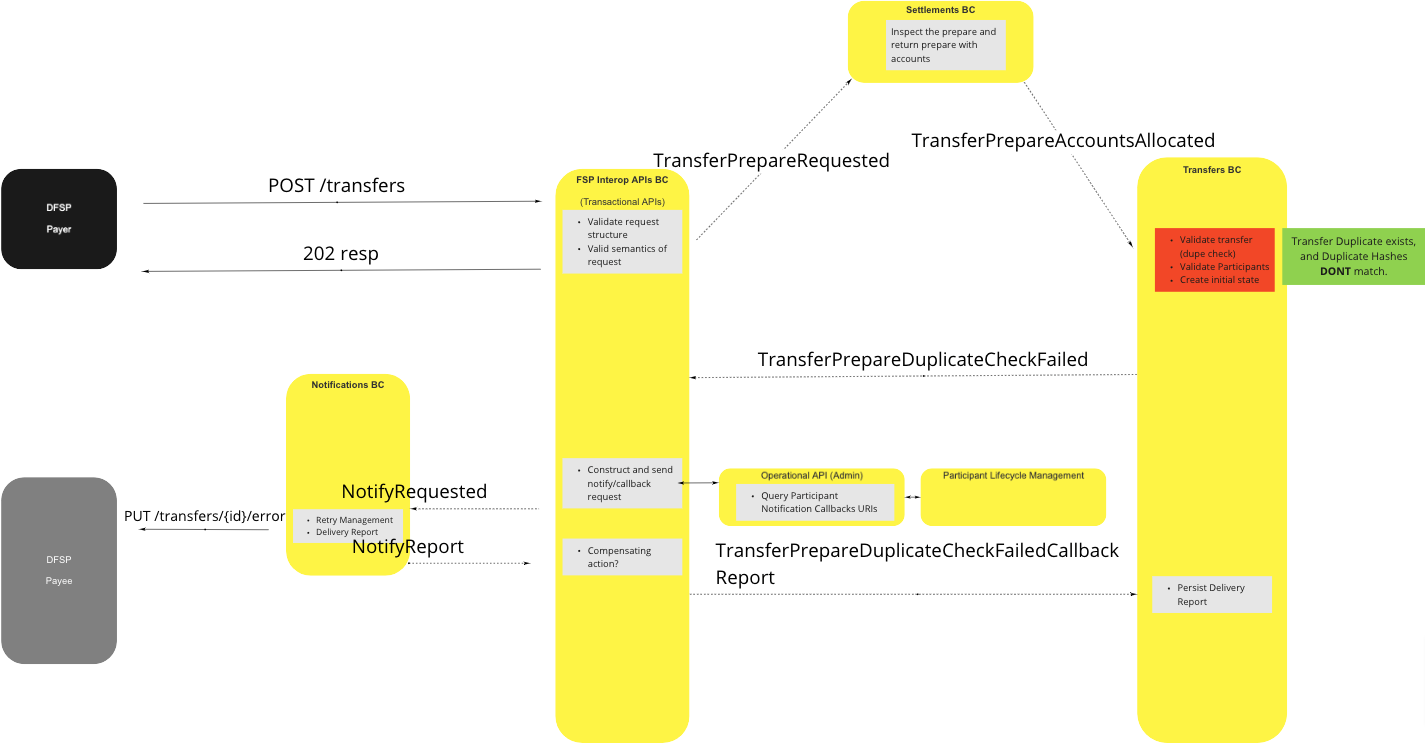
# Perform Transfer - Payer FSP Insufficient Liquidity
# Description
Transfer request fail due to insufficient liquidity (Payer)
# Flow Diagram

# Perform Transfer - Transfer Prepare Validation Failure (Invalid Payer Participant)
# Description
Transfer prepare validation fail due to involid/non-existent Payer
# Flow Diagram
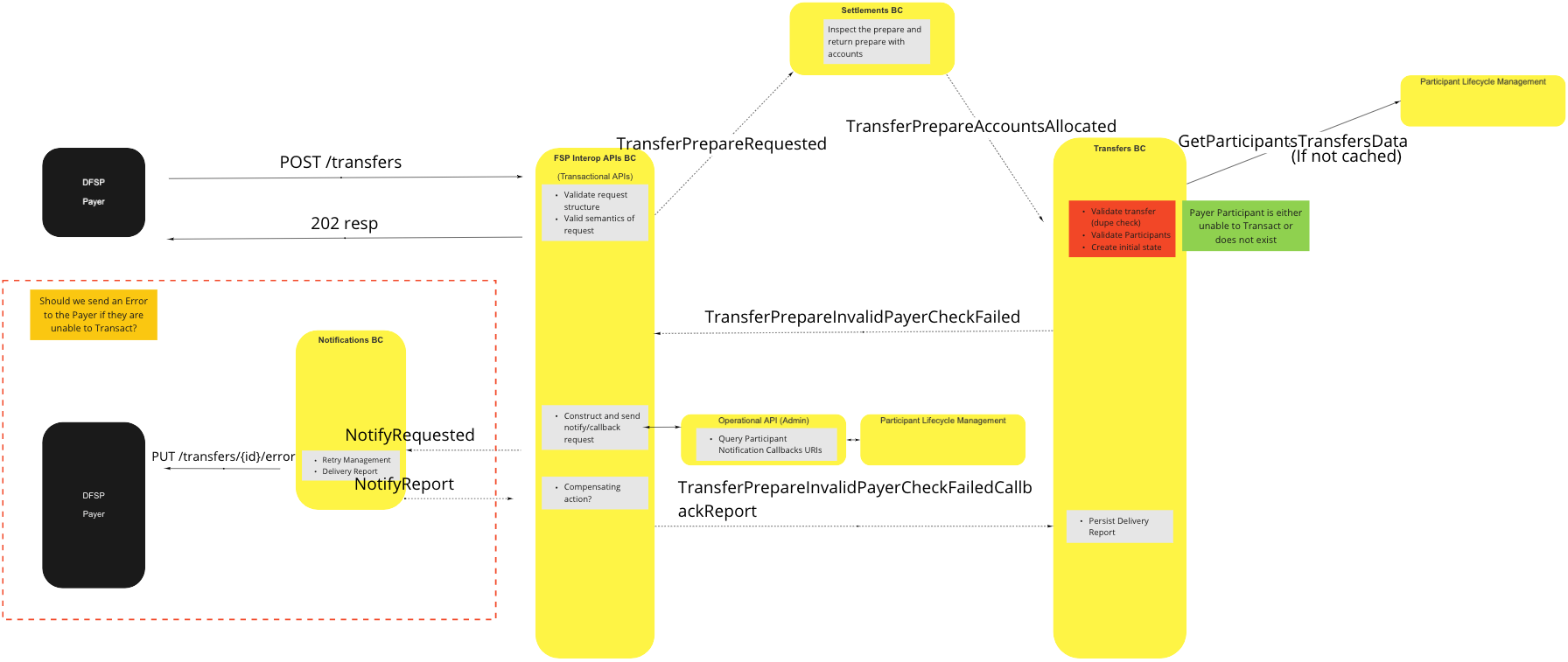
# Perform Transfer - Transfer Prepare Validation Failure (Invalid Payee Participant)
# Description
Transfer prepare validation fail due to involid/non-existent Payee
# Flow Diagram
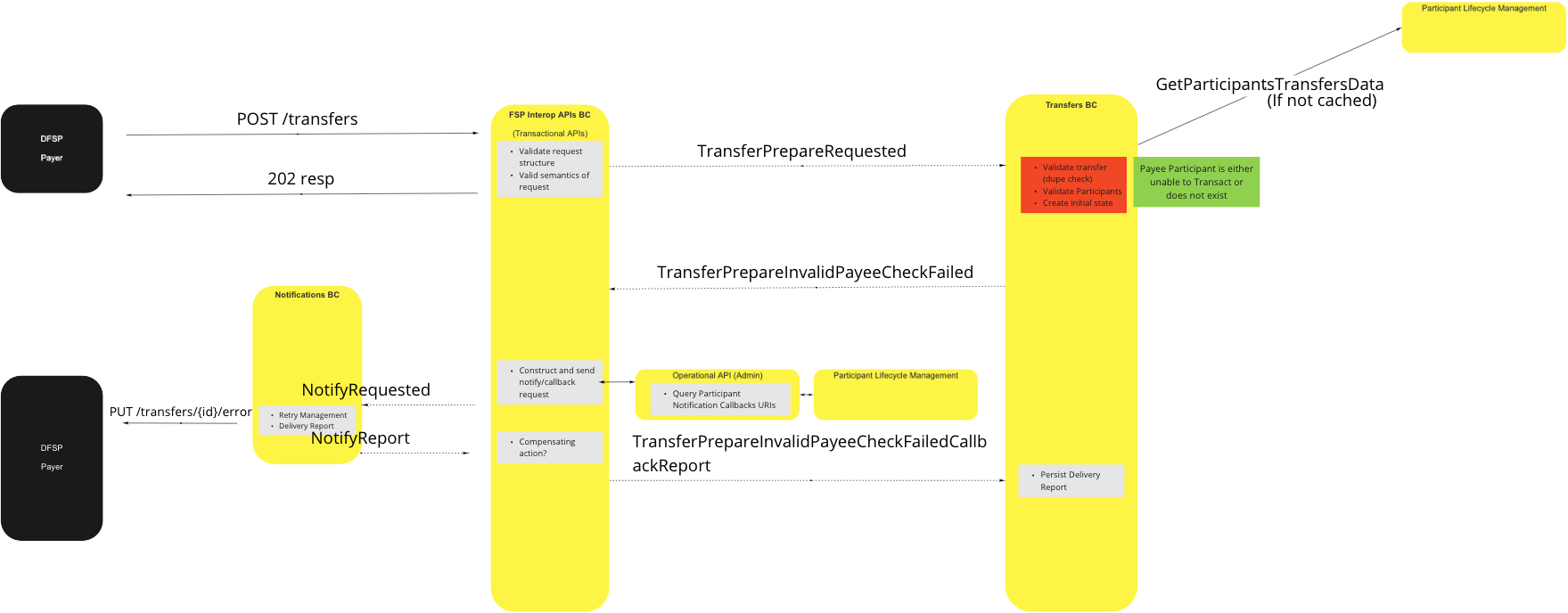
# Query (GET) Transfer - Validation Failure (Invalid Payer Participant)
# Description
Transfer status query - validation fail - invalid/non-existent Payer
# Flow Diagram
UC Diagram TBC
# Query (GET) Transfer - Validation Failure (Invalid Payee Participant)
# Description
Transfer status query - validation fail - invalid/non-existent Payee
# Flow Diagram
UC Diagram TBC
# Query (GET) Transfer - Validation Failure (Transfer Identifier Not Found)
# Description
Transfer status query - validation fail - Transfer identifier token not found
# Flow Diagram
UC Diagram TBC
# Canonical Model
Mojaloop uses two canonical models to manage funds transfers, one for non-bulk transfers, and one for bulk transfers.
# Standard Canonical Model
- Transfer
- transferId
- transferType
- quoteld (optional)
- settlementModelId
- Participants
- Payer
- participantId
- Accounts
- Debit
- accountId
- accountType
- currency
- Credit
- accountId
- accountType
- currency
- Debit
- Payee
- ParticipantId
- Accounts
- Debit
- accountId
- accountType
- currency
- Credit
- accountId
- accountType
- currency
- Debit
- Payer
- Amount (Amount to transfer)
- value (number)
- currency (ISO currency code)
- expiration (ISO dateTime)
- ilpPacket
- Extensions
# Bulk Canonical Model
- Transfers
- bulkId
- bulkQuoteId
- Transfers[]
- Transfer* (see above)
# Concluding Comments
- The Payer FSP should not be permitted to unilaterally time-out a transfer (irrespective of its expiration time), but should respect the Switch’s timeout decisions.
- Validation of cryptographic conditions and fulfillment would be managed by the Transfers BC as it is a fundamental component of the “transfer” process (i.e.: function is not specific to the FSPIOP language)
- The Transfers BC will apply the same validation pattern as the Quoting & Party BC to validate Participants, to determine the ability of an Account to transact, or if a Participant is enabled as mutually exclusive.
- The Transfers BC is the single “source of truth” for all transfers, and is thus responsible for persisting the state/s of transfer’s.
- Disabling Participants already in a “prepared” state should not hinder processing of current transfers, however new transfer instructions received by the Transfers BC via the TransferPrepareAccountAllocated events should be declined.